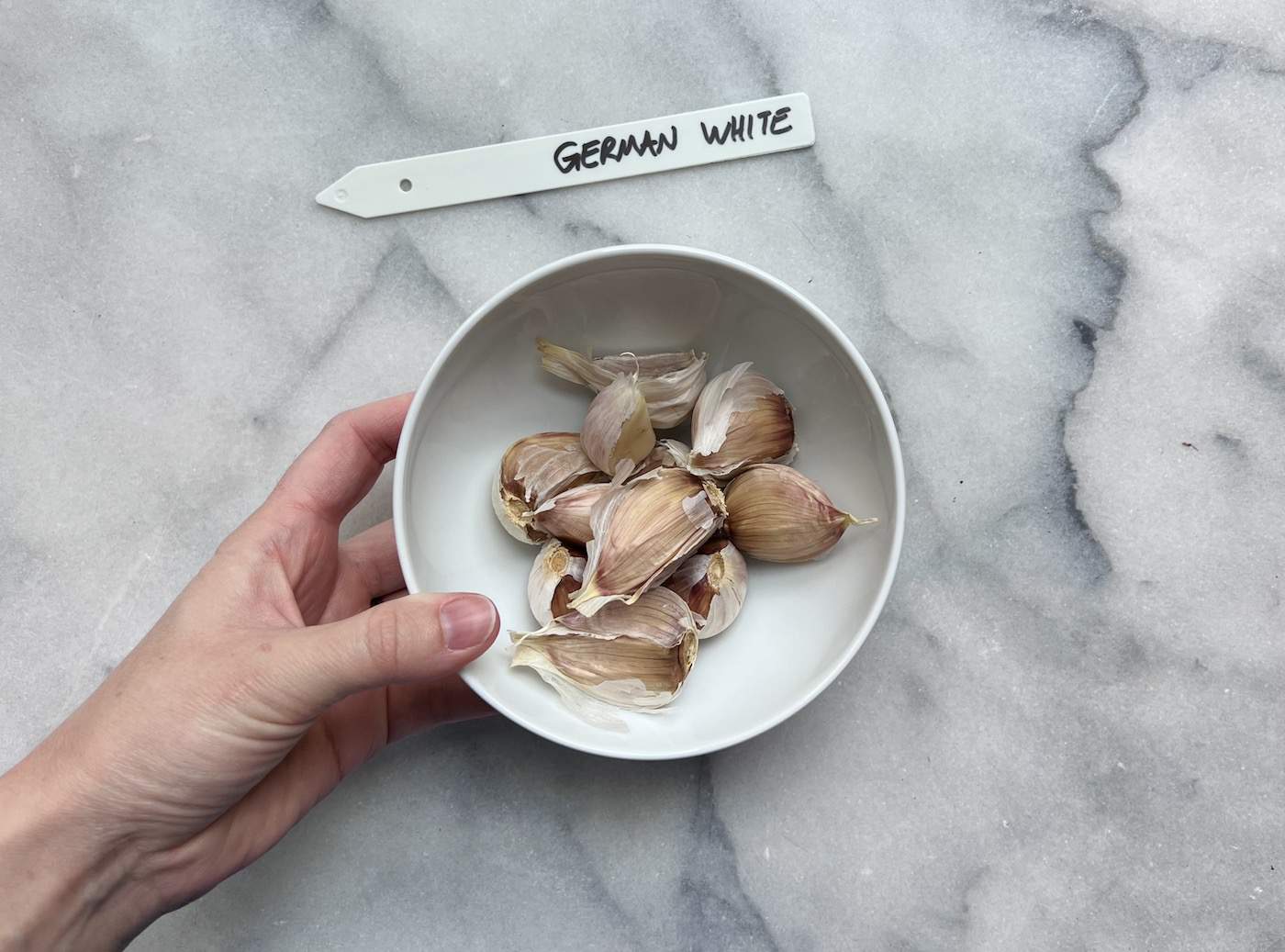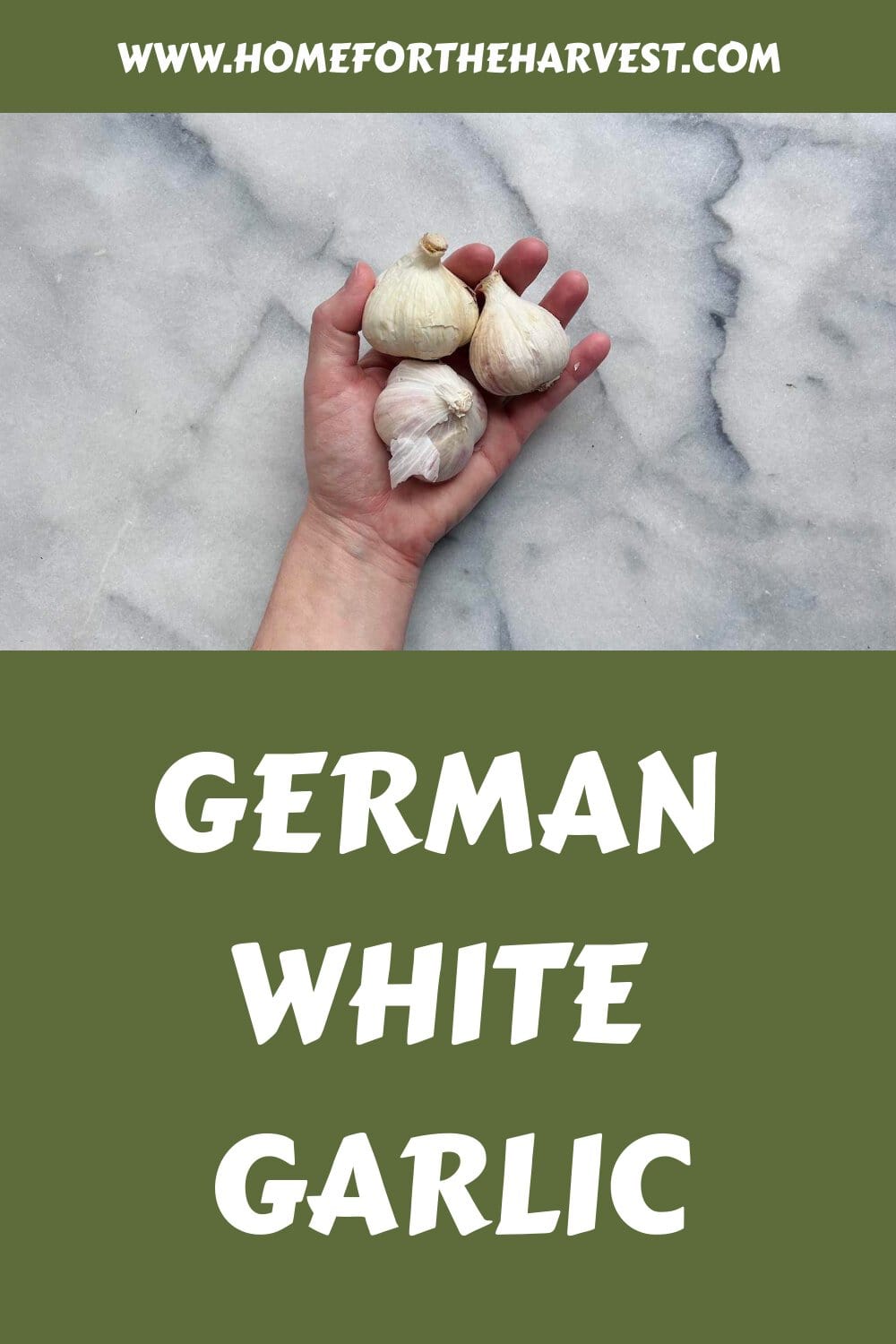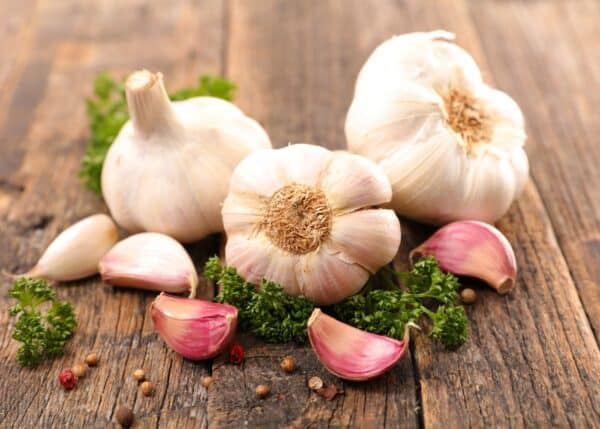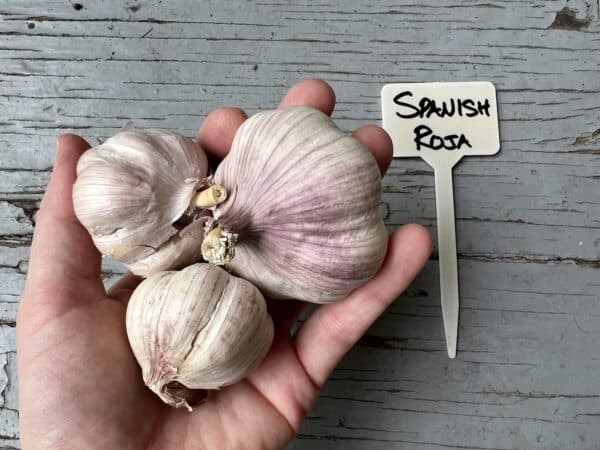German White garlic is a porcelain hardneck variety renowned for its substantial, 2-inch-plus-sized bulbs. Each bulb contains 3-6 large, easy-to-peel cloves enveloped in creamy-white outer wrappers. This variety is most commonly used for making roasted garlic.
Introduction to German White garlic
German White garlic is a porcelain hardneck garlic cultivar known for its large bulbs containing up to 6 robust, easy-to-peel cloves. Adaptable to various climates but especially cold-hardy, this garlic produces flavorful scapes and offers a rich, moderately spicy flavor ideal for roasting, pickling, and long-term storage. With creamy-white outer wrappers and often purple-striped inner ones, it not only brings bold flavors to the table but also adds aesthetic value to your garden.
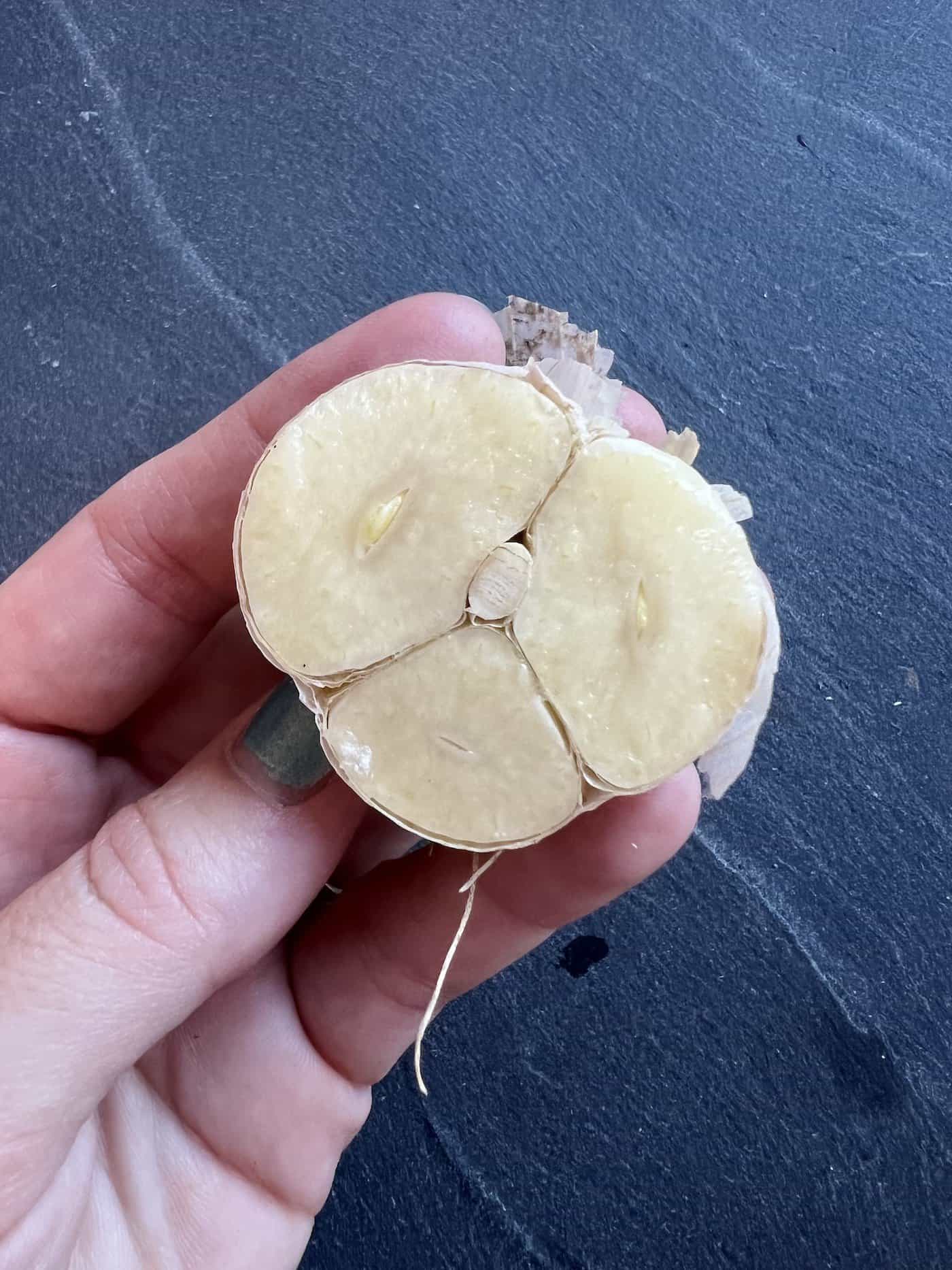
The wrappers are thick and parchment-like. They tightly protect the cloves, adding to their long storage life. This garlic variety is known for its rich, bold flavor that combines a robust spiciness with deep, savory notes, making it an ideal choice for various culinary applications and especially suited to roasting.
A vigorous and resilient grower, German White thrives particularly well in colder climates, although it can grow in almost any setting. For growers interested in yield, you can expect 5-7 medium-sized cloves per bulb.

The strong, robust flavor of German White Garlic makes it a top variety for roasting, pickling, and long-term storage. Due to its strong flavor profile, it is especially wonderful when roasted and spread on warm bread or mixed into gravies and sauces. Whole intact bulbs can even be stored until the next spring, making it a reliable choice for both the garden and the kitchen.
One of the interesting features of the hardneck types of garlic is its production of a coiling “scape” or garlic flower, which can be harvested and utilized in cooking even before the garlic itself is ready. These scapes add another layer of culinary versatility to an already impressive plant.
Flavor profile of German White garlic
German White garlic offers a robust and bold flavor with just the right amount of spiciness, making it an excellent choice for roasting and long-term storage. Its flavor is well-suited for hearty stews, gravies, and sauces. It can be a bit hotter than some other varieties, with a hint of bitterness. It has a simple but true garlic taste.
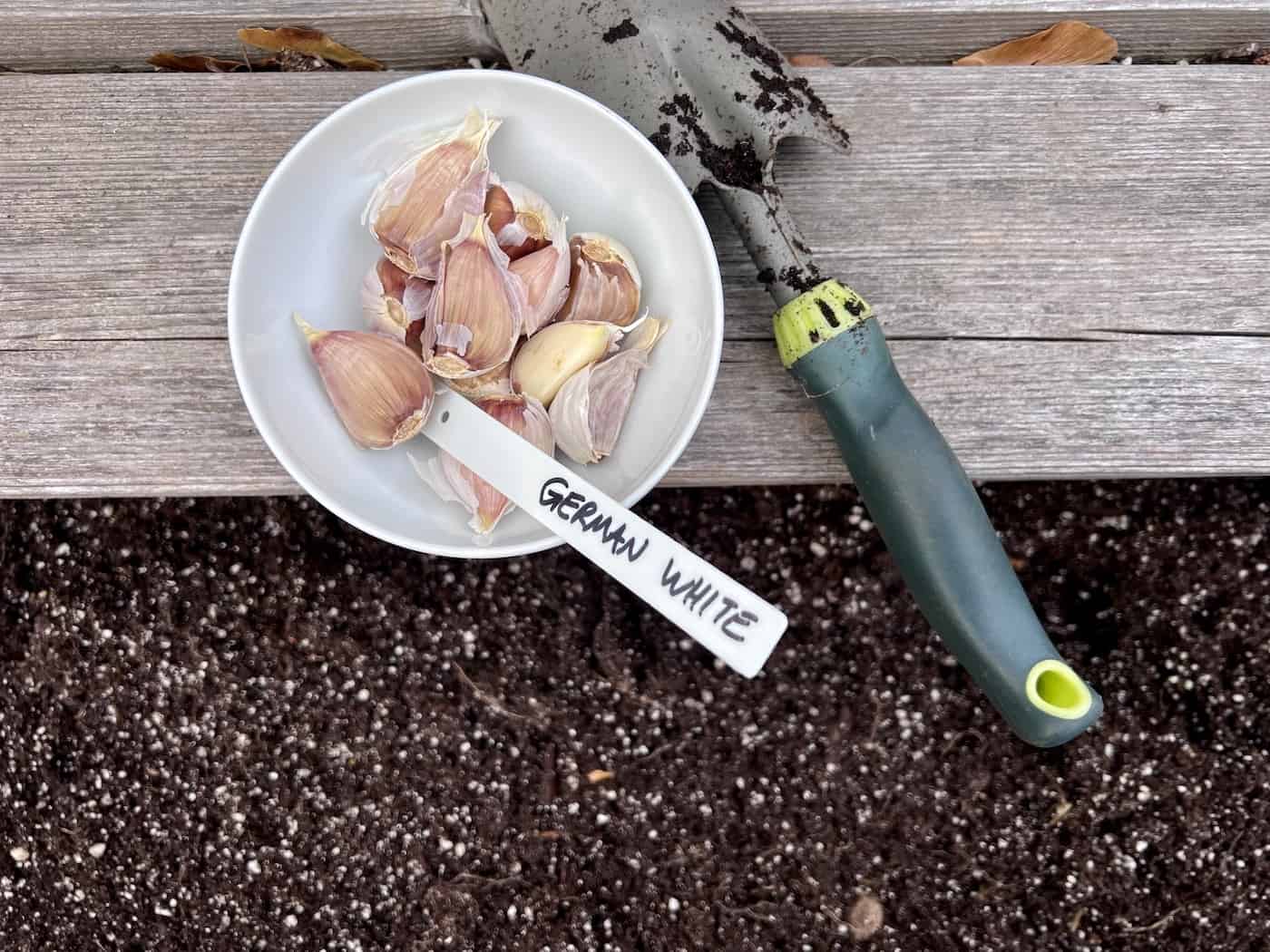
Growing German White garlic at home
Growing and harvesting German White garlic at home can be incredibly rewarding, especially if you’re an avid gardener. It is fulfilling to create something unique, but the end product of a delicious organic snack or ingredient for your dishes makes it all worthwhile!
To get started with cultivating this type of garlic successfully, first, you will need to buy high-quality seed cloves from a reliable source. If feasible, look for local suppliers acclimating to the environment where they will be planted.
After getting your seed garlic ready, then comes preparation time – preparing the soil! Making sure everything is just right before adding any plants makes all the difference when growing something successfully. If you want the best results, use a compost mix specifically designed for garlic beds, which is organic-rich. This will provide your growing cloves with plenty of nutrition and ensure those delicious flavors develop to their maximum potential!
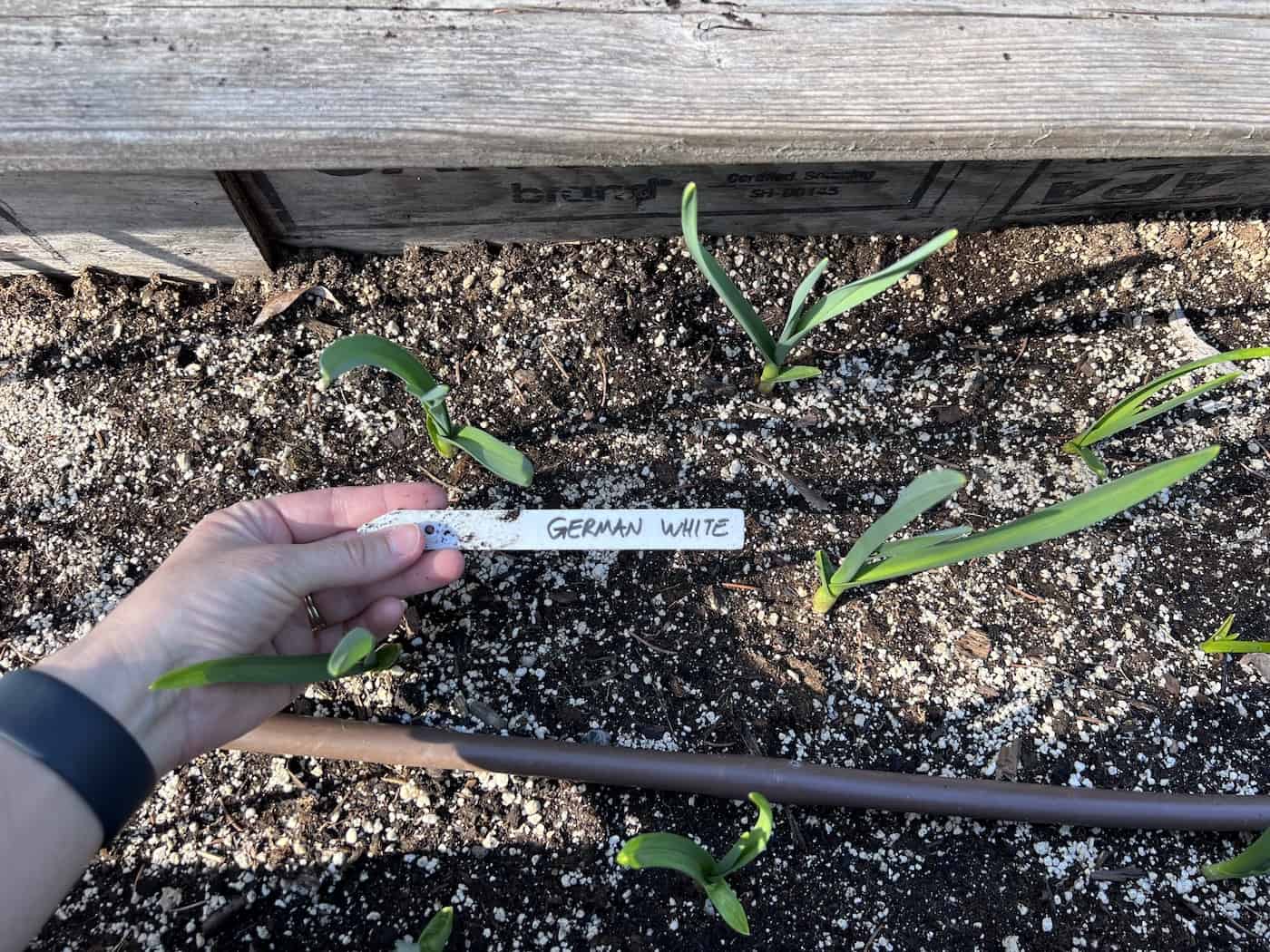
When planting individual cloves, make sure they’re two inches deep into the soil and 8 – 12 inches apart in rows spaced 6 – 8 inches apart. Your choice of soil should also have good drainage, as too much standing water can cause rotting or mildew during growth stages.
Your garlic shoots should sprout up in the spring as the soil thaws after winter. Scapes are usually ready to harvest in mid-spring, while whole cloves are generally ready to be harvested in early summer.
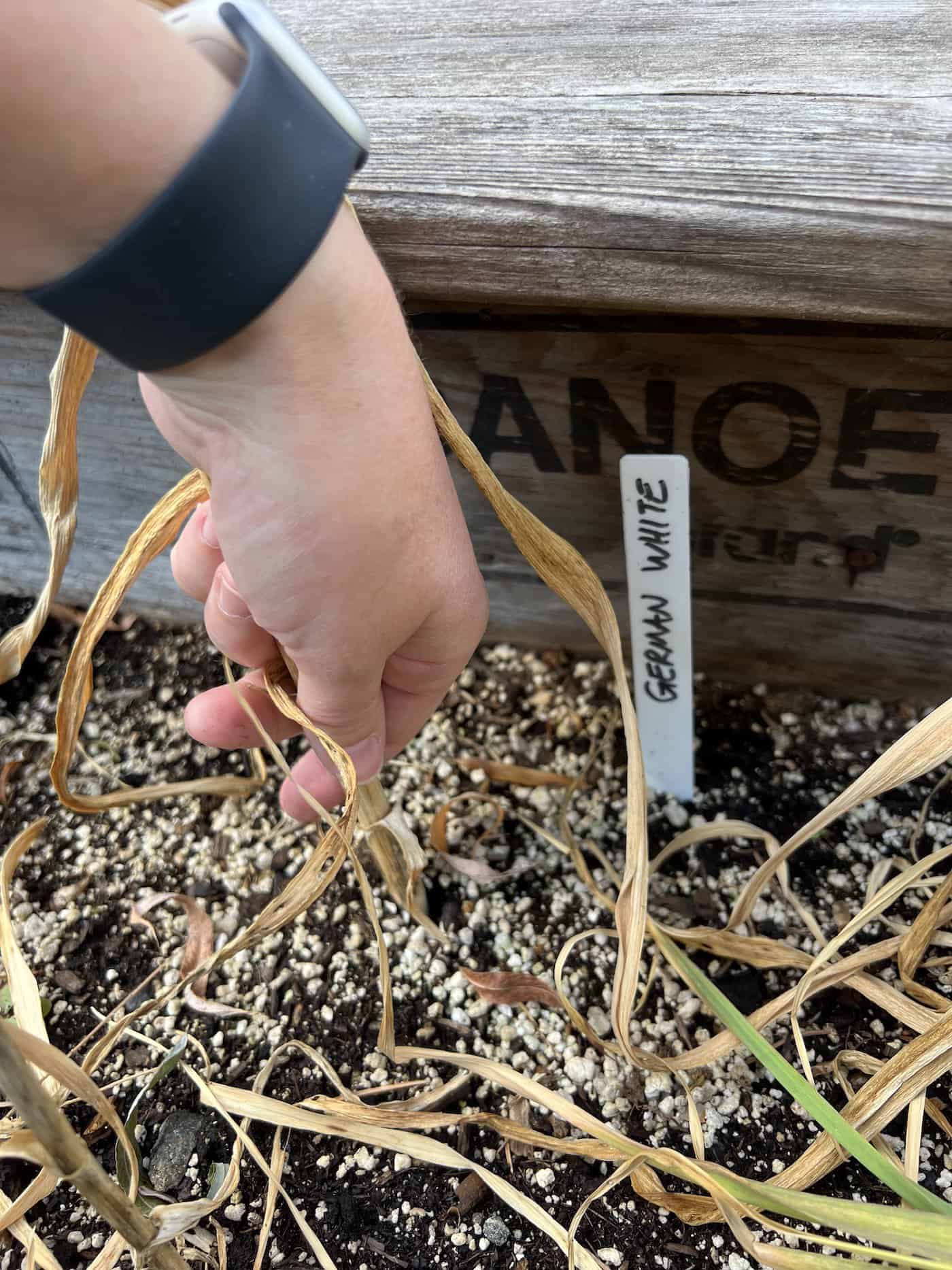
How to harvest & store German White garlic
To harvest hardneck garlic, wait until the lower leaves start to yellow and wilt but a few green leaves remain—this usually happens in late spring to early summer. Use a spade or fork to carefully lift the bulbs from the ground, avoiding direct pulling, which may result in damaged stalks or cloves.
Shake off excess soil and hang the bulbs, or lay them out in a single layer in a well-ventilated, dry, and shaded area. The curing process typically takes 2-4 weeks. You’ll know the garlic is cured when the wrappers are dry and the roots feel brittle.
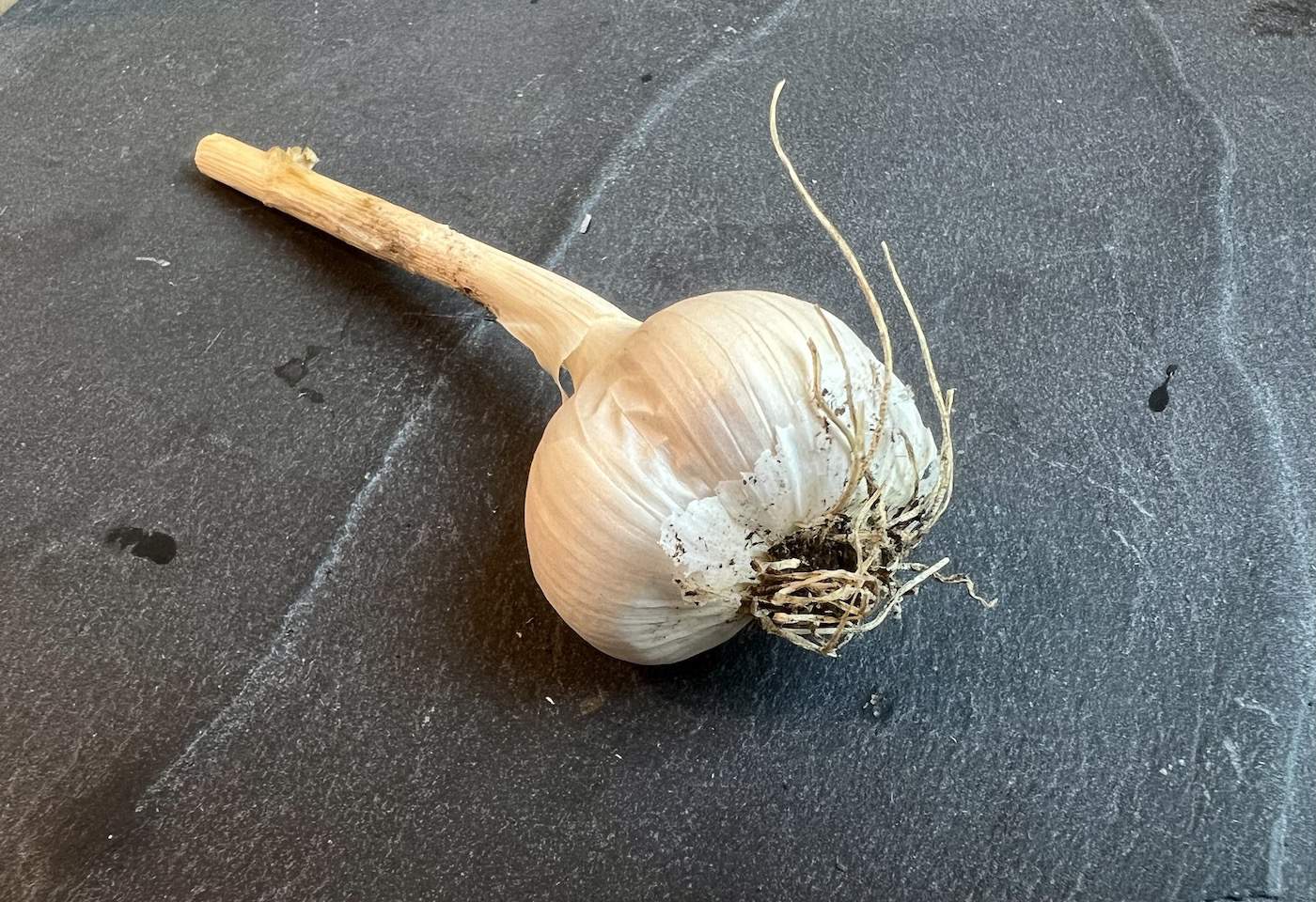
Once your hardneck garlic is cured, it’s time for storage. Trim the stalks to about 1-2 inches above the bulb and the roots close to the base. Store the bulbs in a cool, dry, and dark place, ideally at cool temperatures ranging from 55 to 65°F (13-18°C).
Mesh bags or loosely woven baskets provide good ventilation and are ideal for storage. Unlike softneck garlic, which can last up to a year if stored correctly, hardneck varieties usually have a shorter storage life, often around 6-8 months (but sometimes longer). Check periodically for any signs of mold or spoilage.

German White garlic in cooking
Using German White garlic in your cooking doesn’t have to be intimidating. In fact, it can provide an unmistakable flavor that makes any dish stand out from the rest! But when you break down this versatile ingredient into its parts, there are even more ways for you to incorporate it into your culinary creations. For instance, one of the easiest methods is simply adding cloves — either chopped or whole — directly onto whatever food item you’re preparing.
German White garlic is a great ingredient to use when you want to add robust flavor without overpowering the other ingredients in your dish. It’s perfect for marinades or rubs, particularly on meats like chicken and pork chops if you’re grilling or roasting. You can also slice up some garlic and put it atop pizzas and flatbreads – this will provide an intense yet mild flavor that won’t drown out all of the toppings’ flavors.
A mix of olive oil, butter, minced German white garlic, and some freshly chopped herbs makes a delicious sauce that complements poultry or fish recipes. For something more special, give slow-cooking cloves low heat until they become soft, then blend with cream cheese for an amazing dip or spread. German White garlic is also perfect for stir-fries and soups because its mild flavor won’t overpower the subtle taste of bok choy and asparagus veggies. Isn’t it a great way to diversify your meal?
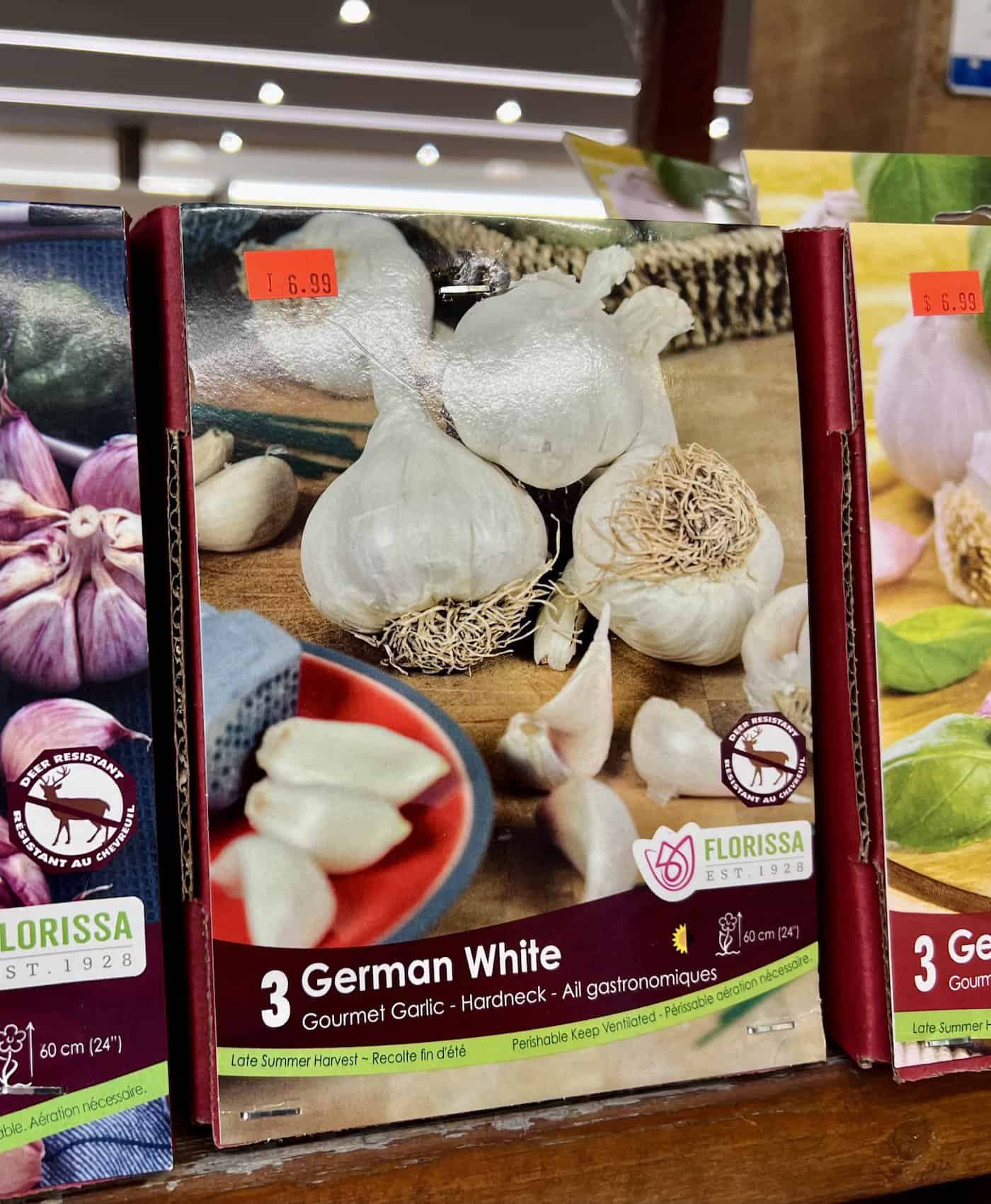
The origin of German White garlic
German White garlic is an heirloom variety that likely originates from Northern Germany. This cultivar was used across Europe and eventually ended up in the US in the years before World War II.
What makes this type of garlic stand out from others is its texture – its cloves have a paper-like skin, similar to elephant garlic but thinner. Plus, they’re usually bigger, making them easier to clean and prepare for cooking.
